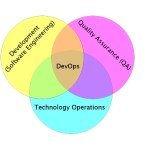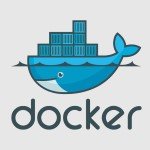Agile and DevOps Integration: Maximizing Efficiency in Software Development
Agile and DevOps integration is the key to unlocking maximum efficiency in modern software development. While Agile focuses on iterative development and customer collaboration, DevOps emphasizes automation, continuous delivery, and collaboration between development and operations teams. Together, they create a powerful synergy that accelerates delivery, improves software quality, and enhances team collaboration. This article explores how to combine Agile and DevOps effectively, providing actionable strategies, best practices, and tools to help your organization achieve seamless integration and deliver value faster.
1. Understanding Agile and DevOps
Agile Methodology
Agile is a project management and software development framework designed to deliver value incrementally and adapt to changing requirements. It originated as a response to the limitations of traditional waterfall methods, which often led to delayed deliveries and misaligned outcomes.
Key Principles of Agile:
- Iterative Development: Work is divided into small, manageable increments called sprints, typically lasting 2-4 weeks.
- Customer Collaboration: Regular feedback from stakeholders ensures the product meets their needs.
- Adaptability: Teams can pivot quickly in response to changing requirements or market conditions.
- Continuous Improvement: Regular retrospectives help teams identify areas for improvement.
Popular Agile Frameworks:
- Scrum
- Kanban
- Extreme Programming (XP)
DevOps Methodology
DevOps is a cultural and technical movement that bridges the gap between development (Dev) and operations (Ops) teams. It aims to streamline the software delivery process by fostering collaboration, automating workflows, and enabling continuous integration and delivery (CI/CD).
Key Principles of DevOps:
- Automation: Automate repetitive tasks like testing, builds, and deployments to reduce errors and save time.
- Collaboration: Break down silos between development and operations teams to improve communication and efficiency.
- Continuous Delivery: Ensure software can be released to production at any time with minimal manual intervention.
- Monitoring and Feedback: Use real-time monitoring to identify issues and gather feedback for continuous improvement.
Popular DevOps Tools:
- Jenkins, GitLab CI, CircleCI (CI/CD)
- Docker, Kubernetes (Containerization and Orchestration)
- Prometheus, Grafana (Monitoring)
2. Agile vs. DevOps: Key Differences
While Agile and DevOps share common goals like improving efficiency and delivering value, they differ in focus and scope:
| Aspect | Agile | DevOps |
|---|---|---|
| Primary Focus | Development process | End-to-end software delivery |
| Goal | Delivering customer value quickly | Ensuring reliable and fast releases |
| Team Structure | Cross-functional development teams | Collaboration between Dev and Ops |
| Tools | Jira, Trello, Scrum boards | Jenkins, Docker, Kubernetes |
| Timeframe | Short sprints (2-4 weeks) | Continuous delivery |
3. Why Combine Agile and DevOps?
Agile and DevOps are not mutually exclusive; in fact, they complement each other perfectly. Here’s why combining them is beneficial:
- Faster Time-to-Market: Agile’s iterative development ensures features are delivered incrementally, while DevOps’ automation accelerates the release process.
- Improved Collaboration: Both methodologies emphasize teamwork, breaking down silos between development, operations, and other stakeholders.
- Higher Quality: Continuous testing and integration in DevOps ensure that Agile’s working software is also reliable and production-ready.
- Greater Flexibility: Agile’s adaptability and DevOps’ automation make it easier to respond to changes and feedback.
- End-to-End Efficiency: Agile focuses on the “what” (features to build), while DevOps focuses on the “how” (how to deliver them efficiently).
4. How to Combine Agile and DevOps
Step 1: Align Teams and Goals
- Ensure development and operations teams share common objectives and KPIs.
- Foster a culture of collaboration and shared responsibility, where both teams work toward delivering value to the customer.
Step 2: Integrate CI/CD Pipelines
- Use CI/CD tools like Jenkins, GitLab CI, or Azure DevOps to automate builds, tests, and deployments.
- Align CI/CD processes with Agile sprints to ensure that each iteration results in a potentially shippable product.
Step 3: Automate Testing
- Implement automated testing frameworks (e.g., Selenium, JUnit) to ensure quality in every sprint.
- Include unit tests, integration tests, and performance tests in the CI/CD pipeline to catch issues early.
Step 4: Monitor and Iterate
- Use monitoring tools like Prometheus, Grafana, or New Relic to track application performance in real-time.
- Incorporate feedback from operations into Agile planning to continuously improve the product and processes.
Step 5: Adopt Agile Practices in Operations
- Apply Agile principles like sprints and retrospectives to operations teams.
- Encourage operations teams to participate in Agile ceremonies like daily standups and sprint reviews.
5. Best Practices for Combining Agile and DevOps
- Start Small: Begin with a pilot project to test the integration of Agile and DevOps before scaling across the organization.
- Focus on Culture: Encourage a culture of collaboration, transparency, and shared ownership across teams.
- Invest in Tools: Use tools that support both Agile and DevOps workflows, such as Jira for Agile planning and Jenkins for CI/CD.
- Measure Success: Track metrics like deployment frequency, lead time, mean time to recovery (MTTR), and defect rates to gauge the effectiveness of the integration.
- Iterate and Improve: Continuously refine processes based on feedback and results to ensure ongoing improvement.
6. Opinions and Insights
The combination of Agile and DevOps is widely regarded as a best practice in modern software development. Industry experts highlight that Agile provides the framework for iterative development and customer focus, while DevOps ensures that software is delivered reliably and efficiently. Teams that successfully integrate these methodologies often report faster delivery cycles, improved collaboration, and higher customer satisfaction. However, achieving this synergy requires a cultural shift, investment in tools, and a commitment to continuous improvement. Some challenges include overcoming resistance to change, aligning team goals, and managing the complexity of integrating tools and processes.
By combining Agile and DevOps, organizations can achieve a seamless workflow that maximizes efficiency, improves collaboration, and delivers high-quality software at scale. While the integration requires effort, the benefits of faster delivery, greater flexibility, and enhanced customer satisfaction make it a worthwhile investment. Whether you’re a startup or an enterprise, integrating Agile and DevOps can help you stay competitive in today’s fast-paced software development landscape.
7. Sources
- Agile Manifesto: https://agilemanifesto.org/
- DevOps Principles: https://aws.amazon.com/devops/what-is-devops/
- CI/CD Tools: https://www.jenkins.io/
- Monitoring Tools: https://prometheus.io/
- Industry Articles on Agile and DevOps: https://medium.com/









